Monday 17 April 1941
 |
| Italian Bersaglieri (Marksmen) march through the city streets of Dubrovnik as crowds watch on following the Axis invasion of Yugoslavia following the Yugoslav capitulation of 17 April 1941. |
The situation may be legally muddled, but the inescapable conclusion is that Yugoslavia is now out of the war.
Yugoslav assistant to Commander General Danil Kalafatovic, Lieutenant General Mihailo Bodi, and German Colonel General Maximilian Freiherr von Weichs sign an armistice in the building of the Czechoslovak ministry in Belgrade. Separately, the Ban and National Assembly of Slovenia surrender to the Italians. The Yugoslavs resisted for twelve days.
Virtually the entire Yugoslav government, including King Peter II, already has fled to Athens via RAF Flying boat flying from the island of Kotor. The military situation clearly is hopeless for the Yugoslavs and has been for several days. All that remains is for them to see how the Axis powers will divide up the country. The Germans have very definite ideas on that, and they revolve around a complete abnegation of the treaties signed after World War I.
Others in Yugoslavia are not so fortunate as King Peter and Prime Minister Simovic. Around 6,000 Yugoslav officers and 335,000 troops are put in POW camps. The dispersal of Yugoslav units along the frontier and in remote areas where they have not been captured, though, provide the seeds for a partisan campaign.
Greece is still fighting alongside their British allies. However, it is plain to see how things are going. Prime Minister Winston Churchill reads the contents of a telegram from Middle East Commander General Archibald Wavell. In it, Wavell recounts discussions held in Athens between local British commander General Henry Maitland Wilson and Greek Commander in Chief General Alexander Papagos. While agreeing to the British withdrawal down the waist of Greece, Papagos noted (according to Wavell's message):
as things might become critical in future, he [Wilson] should re-embark British troops and save Greece devastation.The War Cabinet minutes note that "arrangements to this end [the British evacuation from the mainland] were being made."
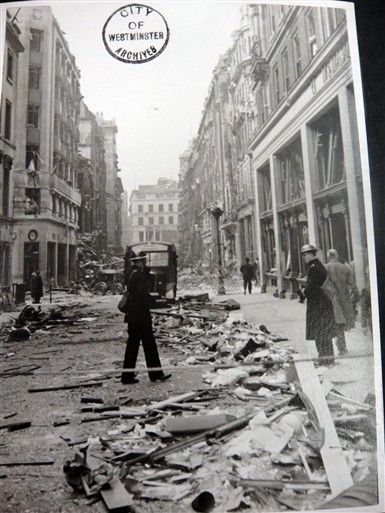 |
| Jermyn Street looking towards St. James's Street, 17 April 1941 (Copyright Westminster City Archives). |
In this telegram [from General Wilson], General Wavell had also been informed that Crete must be held in force, and that it was important that strong elements of the Greek Army should establish themselves in Crete, together with the King and Government.The War Cabinet Minutes again state that the members "expressed their agreement with the line taken in this telegram."
In the field, British troops in Greece continue moving back to the line Thermopylae-Corinth that Papagos has approved. This requires a retrograde move of at least 100 miles for most units. The New Zealand 21st Battalion, which delayed the panzers at the Platamon railway tunnel yesterday, continue performing delaying maneuvers at the Tempe and Pinios Gorges.
The Luftwaffe bombs and sinks 1196 ton Greek freighter Damaskini in Oreos Channel near Euboea.
The Luftwaffe bombs and badly damages 7020 ton Greek freighter Petrakis Nomikos at Piraeus. The skipper beaches the ship quickly, which saves it from sinking but also makes it an attractive target for further attacks.
The Yugoslavs scuttle destroyer Zagreb in Cattaro Harbor. There are four deaths. The Germans, however, capture largely intact destroyers Beograd and Dubrovnik and damaged destroyer Ljubjana.
The remaining 18 planes of the Yugoslav Air Force fly to Greece, ending their operations in Yugoslavia.
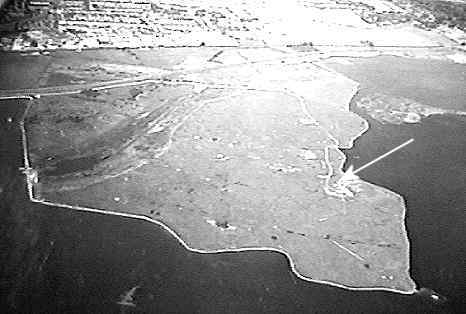 |
| Hayling Island, with the decoy site marked with an arrow (Natural History Museum in Cumberland House Portsmouth, via Portsdown Tunnels). |
In retaliation for the British air raid on the residential and cultural center of the German capital on the night of 9th-10th April, the German Luftwaffe last night carried out a grand assault on the British capital.... In future, any British air raid on residential quarters of Germany will be answered by increased retaliation.Needless to say, perhaps, but the Luftwaffe has been pounding British "residential quarters" relentlessly since September 1940. Also, note the reference to a "cultural" center - meaning, don't bomb the Berlin Opera House again.
Visiting Australian Prime Minister Robert Menzies must drive through the London devastation to reach 10 Downing Street. He notes in his diary:
It takes a long time to reach Downing Street. All round Victoria there is damage and confusion. The Admiralty has a great chunk cut out of it. Charing Cross Station is ablaze, and the Halifax Building in the Strand also. Shell-Mex building has a great unexploded bomb, and is evacuated. Two bombs fell on either side of the street from Australia House. In Middle London, every street shows the marks. There are at least 1000 dead and 2000 seriously injured.Among many, many others, Lord and Lady Stamp are killed. Lord Stamp was the Government adviser on Economic Coordination.
RAF Bomber Command replies to the Luftwaffe's massive raid on London last night with another large raid of their own on Berlin. About 118 bombers, the largest raid so far, including for the first time in operations heavy Stirling bombers, hit the German capital. The RAF loses a Wellington, two Hampdens, five Whitleys, and a Stirling. There also are diversionary raids by 35 planes against Cherbourg and 13 planes against Rotterdam. One RAF bomber can't make it to Berlin because of thick haze and cloud cover and drops its stick on Cologne or a nearby area instead. This factor also makes the entire raid inaccurate.
The Luftwaffe also is active after dark. It raids one of its favorite targets, Portsmouth. The raid, however, is very unusual. The large force of Luftwaffe bombers drops their 170 tons of high explosives and 5400 incendiaries on a brightly lit target that they assume to be the city of Portsmouth. In fact, it is a "Q" decoy site set up in Farlington Marshes on Hayling Island just to the south of Portsmouth in Hampshire. The decoy involves a number of decoy fires that burn for four hours, attracting the bomber navigators away from the city. The bombs destroy a Heavy Anti-aircraft Artillery battery at Southwest Hayling, killing the soldiers there, along with some pillboxes and other military installations. Portsmouth itself largely is spared. The residents of Hayling Island, though, are not, and they are somewhat annoyed at having the decoy site set up in their own backyards.
Churchill sends Air Chief Marshal Sir Charles Portal a strongly worded "Action this Day" memorandum criticizing the RAF's failure to "hit the enemy cruiser in Brest." In fact, the RAF has hit Gneisenau, but apparently the British do not know this yet. Churchill chastises the Air Ministry for "neglecting the dive-bomber type of aircraft," which of course is exemplified by the Luftwaffe's Junkers Ju 87 Stuka.
Lt. Ernest Oliver Gidden, RNVR, earns the George Cross for defusing a bomb on Hungerford Bridge.
 |
| South Hayling antiaircraft battery, destroyed as the result of a British Q decoy operation that spared Plymouth. |
Battle of the Atlantic: German raider Atlantis is operating in the south Atlantic when lookouts spot 8,299-ton Egyptian liner Zamzam in the pre-dawn hours. Captain Rogge mistakes the liner for a British liner being used as a troop transport. He orders his crew to open fire at a range of 5 miles (8 km). The Atlantis quickly destroys the Zamzam's radio and takes aboard 202 passengers as prisoners. Among those on board are 138 Americans, including Fortune magazine editor Charles J.V. Murphy. Rogge puts the neutrals on German supply ship Dresden for transport to Portugal.
One of the passengers is Life magazine photographer David E. Scherman, who takes some pictures of the ship. Rather than surrender the film to the Germans as they demand, he puts them in tubes of toothpaste and shaving cream and smuggles them out for publication in his magazine in the 23 June 1941 issue.
- 1446-ton British freighter Effra (sunk, two dead)
- 1298-ton Dutch freighter Nereus (sunk, all survive)
- 5673-ton British freighter Ethel Radcliffe (towed to Yarmouth)
The Luftwaffe bombs and sinks 394-ton Danish trawler Naeraberg between the Faroes and its destination of Fleetwood. Everyone survives.
British 1578-ton collier Parnu sinks following its collision on the 16th with freighter Fluor about a dozen miles off Cape Wrath.
U-123 (Kptlt. Karl-Heinz Moehle), on its fourth patrol out of Lorient, torpedoes and sinks 6991-ton Swedish tanker Venezuela. This is an inefficient attack, requiring five torpedoes, which can be quite frustrating for a U-boat commander. Reportedly, the crew of 49 takes to the lifeboats, but there are no survivors... which may not be a coincidence with the difficulty of the sinking.
Norwegian 1608-ton freighter Profit hits a mine and sinks while en route from London to Hull. There are 12 deaths.
Convoy SL 72 departs from Freetown.
U-566 is commissioned.
 |
| Jermyn Street, Westminster, 17 April 1941 (Copyright Westminster City Archives). |
Lieutenant General Erwin Rommel personally supervises an attack on Tobruk by two companies of motorcycle troops, reinforced by artillery, at Ras Mdaauar. This attack makes progress close to the barbed wire, which is held as a jump-off point for future operations. Rommel decides to wait for reinforcements - which were supposed to arrive on the recent convoy that the Royal Navy destroyed off Tripoli - before launching a set-piece attack on Tobruk.
Both sides use their planes to harass the other. The Luftwaffe sends 41 Junkers Ju 87 Stukas against key points within the Tobruk perimeter, while the RAF bombs the investing German and Italian troops.
The Royal Navy has another success with its patrols off Libya. Submarine HMS Truant torpedoes and sinks the 279-ton Italian ammunition barge Vanna off Appolonia. The Truant also attacks 2576 ton German freighter Samos near Benghazi but misses. Some accounts state that the Samos sinks today due to a mine, but other accounts state that happens on 19 April.
Royal Navy destroyers HMS Greyhound and Voyager shells and sinks Italian bark Romagna in the Mediterranean off Libya.
A British flotilla of torpedo boats, the 3rd Motor Launch, arrives in Gibraltar. It is composed of seven launches.
The Luftwaffe bombs Malta with 15 aircraft at 20:47. They hit the St. Paul's Bay area.
Anglo/US Relations: The US turns over four newly completed fast freighters to the British under Lend-Lease.
Canadian/US Relations: Canadian leader Mackenzie King continues his meetings with President Roosevelt. Among other things, they discuss defense production cooperation.
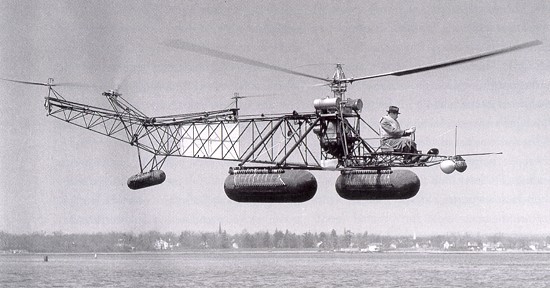 |
| Igor Sikorsky, Homburg securely in place, flying his VS-300 helicopter with pontoons, 17 April 1941 (Sikorsky Historical Archives). |
US Government: William S. Knudsen, director of the Office of Production Management (OPM), announces that automakers and motor truck manufacturers agree to cut production by 20% beginning on 1 August 1941. He states that this is expected to cut the production of such civilian vehicles by about 1 million over the first year. The purpose is to switch resources to war production. The automakers agree to the cuts for a variety of reasons, not least of which is the likelihood that cut would be imposed upon them if they did not do so voluntarily.
OPM also is in discussions with manufacturers of tin cans to reduce the amount of tin being used. They are arguing with the manufacturers about the percentage, 10% less tin versus 17%. The savings are expected to amount to 5000-7500 tons of tin for a 10% cut.
 |
| Duke Street looking toward Piccadilly, 17 April 1941 (Copyright Westminster City Archives). |
Holocaust: At the direction of SS-Untersturmfuehrer Maximilian Grabner, Auschwitz Concentration Camp ceases sending Polish relatives the ashes of now-deceased political prisoners after they have been cremated.
British Homefront: Popular singer Al Bowlly, who reached his peak in the late 1920s and early 1930s but since has faded badly in popularity, is killed during the Luftwaffe raid on London that lasts throughout the night of 16-17 April 1941. Bowlly had taken the last train home the night before from a performance at the Rex Cinema in Oxford Street, High Wycombe, despite being offered a place to stay there overnight. A Luftwaffe parachute mine explodes just outside his flat at 32 Duke Street, Duke's Court, St James, London, at 03:10 and blows the bedroom door off its hinges - it strikes Bowlly in the head, killing him instantly. There is a blue commemorative plaque in his honor at Charing Cross Mansion, 26 Charing Cross Road, a previous residence which the plaque describes as "his home at the pinnacle of his career."
American Homefront: Charles Lindbergh at 20:00 speaks to an overflow crowd of 10,000 at the Chicago Arena, with an additional 4,000 outside the arena, on behalf of the America First Committee. By one count, he is interrupted by applause 31 times while giving an address of only about 2,000 words. His main points:
- The US is being led into war by a minority of war-mongers;
- That 80% of the public opposes joining the war;
- The US is unable at this time to defeat Germany.
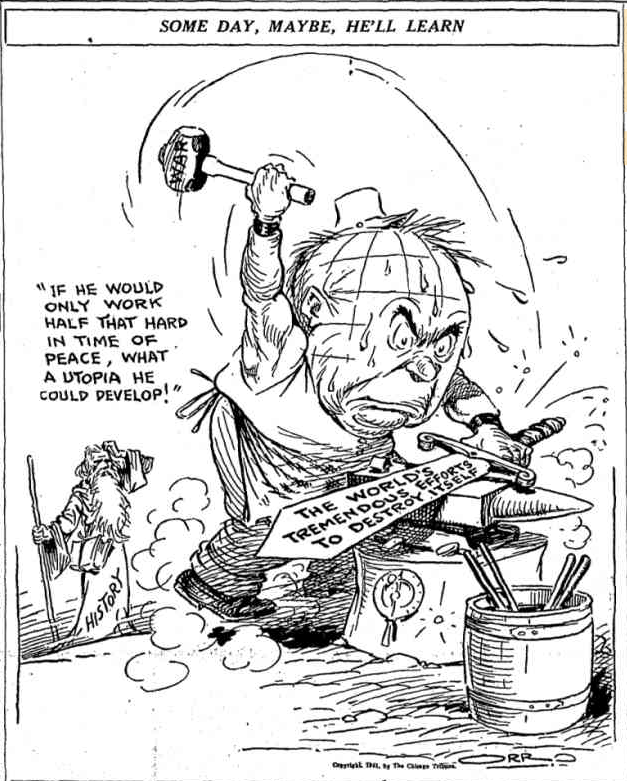 |
| The front-page cartoon on the Chicago Daily Tribune, 17 April 1941. |
April 1941
April 1, 1941: Rommel Takes Brega
April 2, 1941:Rommel Takes Agedabia
April 3, 1941: Convoy SC-26 Destruction
April 4, 1941: Rommel Takes Benghazi
April 5, 1941: Rommel Rolling
April 6, 1941: Operation Marita
April 7, 1941: Rommel Takes Derna
April 8, 1941: Yugoslavia Crumbling
April 9, 1941: Thessaloniki Falls
April 10, 1941: USS Niblack Attacks
April 11, 1941: Good Friday Raid
April 12, 1941: Belgrade and Bardia Fall
April 13, 1941: Soviet-Japanese Pact
April 14, 1941: King Peter Leaves
April 15, 1941: Flying Tigers
April 16, 1941: Battle of Platamon
April 17, 1941: Yugoslavia Gone
April 18, 1941: Me 262 First Flight
April 19, 1941: London Smashed
April 20, 1941: Hitler's Best Birthday
April 21, 1941: Greek Army Surrenders
April 22, 1941: Pancevo Massacre
April 23, 1941: CAM Ships
April 24, 1941: Battle of Thermopylae
April 25, 1941: Operation Demon
April 26, 1941: Operation Hannibal
April 27, 1941: Athens Falls
April 28, 1941: Hitler Firm about Barbarossa
April 29, 1941: Mainland Greece Falls
April 30, 1941: Rommel Attacks
2020
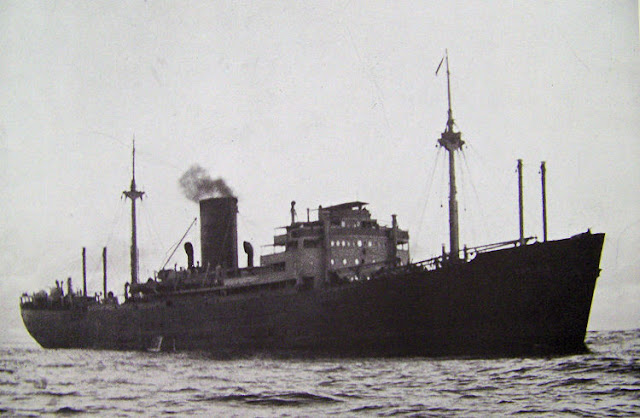
No comments:
Post a Comment